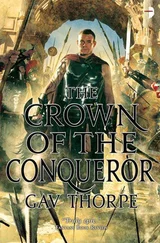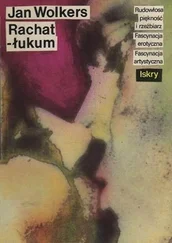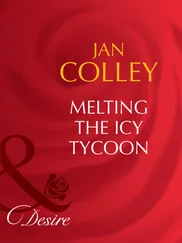In January 1988, in her capacity as Prime Minister of Norway, Gro Harlem Brundtland visited China, land of the dragon, where she was received with full honours: a point underscored by the meeting she had with Deng Xiaoping himself — a signal which did not go unnoticed in diplomatic circles, since Deng was still the most powerful figure in the world’s most populous country. The Chinese deliberately lionized Harlem Brundtland, a socialist and a woman who, by the standards of this country was, at just forty-eight years of age, very young to be a government leader. To Norwegian eyes, Gro Harlem Brundtland’s trip to China must have seemed like a modern-day Viking raid, a kind of peaceful conquest.
During her visit, Chinese television did a feature on the Norwegian politician, and it was around this event that Jonas built his programme: which is to say, the fact that the Chinese television station totally misread the material they had obtained. Some time earlier the prime minister’s office had produced a so-called Video Press Kit on Gro Harlem Brundtland for the use of foreign television stations, to save her from constantly having to attend film shoots. This video contained footage of Gro — the first politician to become known to Norwegians by her first name — in a variety of situations, so-called stock shots, together with an information sheet, so that the stations could choose for themselves which shots they wanted to run, either to illustrate some news item on Harlem Brundtland or to use as the background to some relevant commentary.
But the Chinese broadcast the entire video, with no commentary, to every home in China which owned a television, with the result that the viewers were treated to a total of eight different episodes in which the Norwegian prime minister played the lead, separated only by some blurb and a short title in English. For Jonas, this said everything there was to be said about communication, the divide, between Norway and China. Because to an ordinary Chinese this stream of images must have seemed nigh-on incomprehensible — a bit like a silent film about head-hunters in Borneo being screened in an igloo in Greenland. So Jonas reconstructed a typical Chinese room in the studio, and in this he showed a Chinese family sitting watching this television programme — he had been granted permission to use the actual video in this section of his dramatized documentary.
Thanks to some authentic exteriors — footage which Jonas had had taken of the hutongs , the narrow lanes and alleyways of Beijing — and thanks to the excellent Chinese extras he found among the citizens of Oslo, mainly in the restaurant trade, it looked to the viewers as though the whole sequence had been filmed in Beijing, that the scene they were witnessing here truly was taking place in one of the little houses in one of Beijing’s countless, labyrinthine hutongs in January 1988.
It was a sight which few viewers ever forgot: a Chinese family sitting round the table eating dinner and watching the Evening News on CCTV1, when suddenly a twenty-minute long video about Gro Harlem Brundtland starts to roll across the screen; the Chinese family are told only that this is a film about the Norwegian prime minister, no more than that, there is no voice-over: nothing, just one sequence after another, with a blank screen in between — like a series in which none of the episodes seems to follow on logically from the one before — and in which the only language spoken is Norwegian, except for the last shot, filmed at the UN Headquarters, although that doesn’t make any sense either since none of the family speaks English. Jonas showed the family chattering animatedly about the programme and occasionally laughing heartily and pointing at the TV screen with their chopsticks; the father and grandfather were particularly vocal, making loud comments in a form of Chinese few, if any, Norwegians would understand.
There they sat, all well wrapped up in a room in which, in winter, the temperature never rose above 59 degrees, over their frugal meal, stewed celeriac with sweet soy sauce and boiled rice, in a room dotted with those characteristic lace cloths; with portraits of their ancestors hanging on the walls next to a landscape of Guillin — a place which Harlem Brundtland also visited on her trip; a calendar on a red cord by the door, a sideboard holding thermos flasks for boiling water as well as some small statuettes of the Eight Immortals and, beside it, in the place of honour, a television, a Peon or possibly a Panda with the plush cloth pulled back, and on the screen: Gro Harlem Brundtland, as if she too were one of the immortals — making, as she did, a succession of ghostly appearances in such widely disparate situations: on the rostrum in Parliament, standing outside the palace with her new Cabinet — and here the female members of the family noted that eight of the government ministers were women — in her office, at her home on the island of Bygdøy and so on, in all sorts of roles, evincing the same dynamism in each, maintaining the same breakneck pace, as career woman and housewife, as grandmother and government leader, party chief, electioneer and, not least, European: as Margaret Thatcher’s hostess in Tromsø and as a visitor to Downing Street, this sequence clearly demonstrating Harlem Brundtland’s awareness of how these days foreign policy is also a crucial factor on the domestic front.
Here Jonas killed two birds with one stone. On the one hand he managed to show what an honour, what a compliment, what an invaluable advertisement for Norway this was: Gro Harlem Brundtland and her life shown in brief sequences interspersed with bits of blurb on — potentially at least — the 150 million televisions which were already to be found in China at that time. How proud that ought to make any Norwegian feel! How symbolic: the world’s most heavily populated country, now in the process of becoming a Great Power, of opening up — also via television — and there was Norway, and its prime minister, right in the thick of things.
And on the other hand, Jonas managed to show how fantastic the Norwegian premier must have seemed to Chinese eyes, what a bafflingly Utopian place Norway must seem; a country where half of the government ministers were women and where the country’s leaders walked the streets and talked to ordinary people, lived in perfectly normal houses — it was almost an insult to a nation that had only just put behind it a modern-day reign of tyranny which had cost possibly as many as fifty — some said eighty — million lives, in the name of a fanatical and mistaken political strategy, in a country where you still could not criticize anyone at all openly without being ruthlessly consigned to long-term imprisonment. And after the final shot on the video, in which Harlem Brundtland was seen speaking at the United Nations General Assembly, authoritatively and in her faultless English, in her capacity as chairman of the World Commission on Environment and Development, which is to say: as the world’s ambassador for the environment, the role which forged her eminent international standing and won her awards and distinctions left, right and centre, Jonas had cut to footage of heavily polluted Beijing exteriors, close-ups of gunge clinging to walls, the smoke from briquette fires hanging heavily over the hutongs in the cold January air, as if to say that from the viewpoint of the Beijing hutong , all of this, an awareness of the environment, this video, Norway in general — a small society wrestling with the luxury problem of how to shift the balance from prosperity to preservation — did not matter a jot; the Norwegian social-democracy, its queen, or empress, included, would never be anything other than an exotic postcard passing across the television screen, an almost nonexistent, picture-book idyll — a fact which is confirmed by a look at a Chinese map of the world, in which Norway appears as a bracket the size of a fly dropping tucked way up in the left-hand corner, or Chinese history or geography schoolbooks, in which Norway is barely mentioned and only then in the greater context of Scandinavia or Europe in general.
Читать дальше











